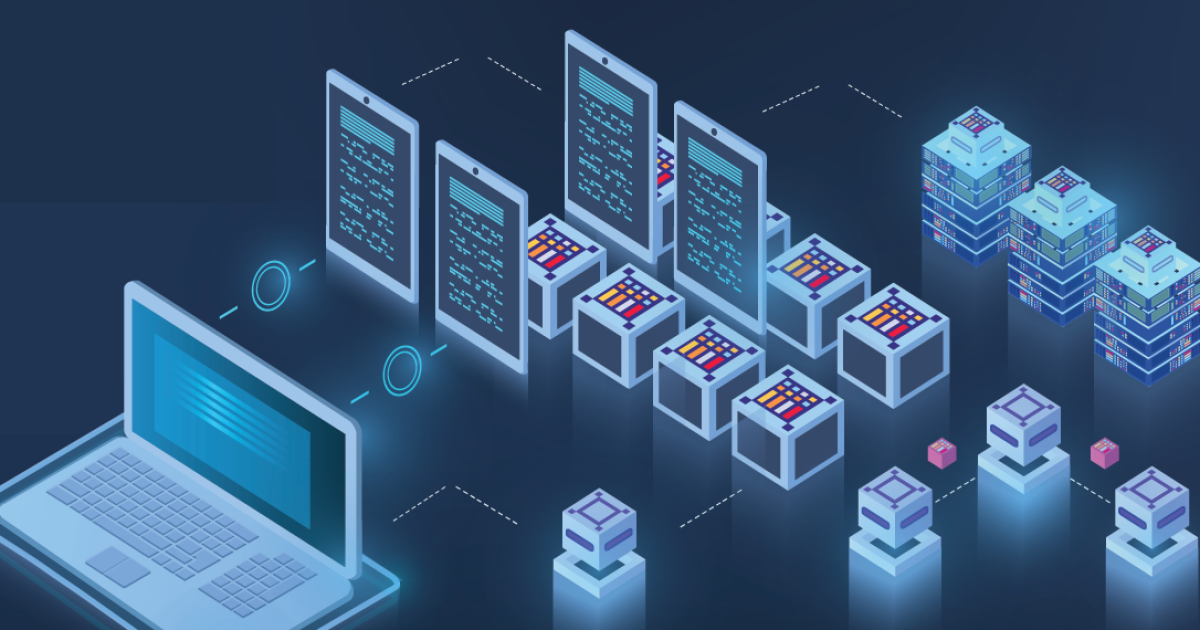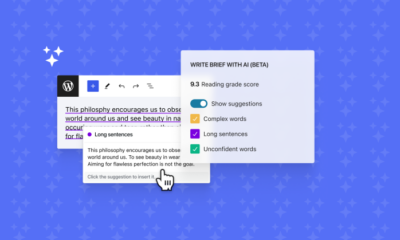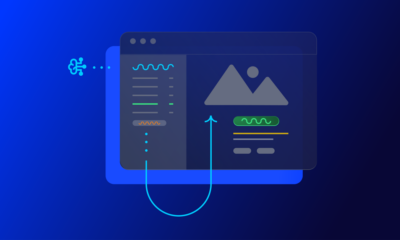TECHNOLOGY
Introducing Blockchain 4.0

The simplest and best definition of Blockchain technology is to think about it as electricity, you only see its applications but you understand how important it’s and know there are many applications and products that can run on it.
But like any other technology it went through stages and evolved as it progressed and matured. We started with Blockchain 1.0 and now we are at Blockchain 4.0.
In the following article we will explain each version of Blockchain:

Blockchain 1.0 – Cryptocurrencies
The Blockchain’s first-ever application was bitcoins. Blockchain has already established itself as the enabler of an ‘Decentralized Internet of Money’ by powering cryptocurrencies. By providing transparency, accountability, immutability and security, Blockchain very soon triggered the influx of more cryptocurrencies, and today we have more than 10,000 different cryptocurrencies in circulation.
Cryptocurrency Types
1. Central Bank Digital Coin
2. Stablecoins
3. Cryptocurrency (Bitcoin, Ethereum, Solana …)
4. Meme Coins (Elon Musk!)
*Maximum number Bitcoin is 21 million coins , we have ~19 millions in the market now
Blockchain 2.0 – Smart Contracts
With Blockchain 2.0 came the era of smart contracts that helped #blockchain to outgrow its original functionality of powering cryptocurrencies.
What is a smart contract?
· Smart contracts are essentially automated agreements between the contract creator and the recipient.
· Written in code, this agreement is baked into the blockchain, making it immutable as well as irreversible.
· They’re usually used to automate the execution of an agreement so that all parties can be sure of the conclusion right away, without the need for any intermediaries.
· They can also automate a workflow, starting when certain circumstances are satisfied.
One key benefit of a smart contract is the automation of tasks that traditionally require a third-party intermediary. For example, instead of needing a bank to approve a fund transfer from client to freelancer, the process can happen automatically, thanks to a smart contract. All that’s required is for two parties to agree on one concept.
Smart contracts have gained widespread appeal because they are tamper proof and lower the cost of verification, exception, arbitration, and fraud protection, in addition to permitting automated permission-less execution. Also, smart contracts allow transparent data recording, which is easily verifiable and provides the involved parties equal sovereignty over their deals.
The very popular Ethereum is a 2nd generation blockchain. For fueling the functionality of smart contracts, Ethereum is the go-to Blockchain for enterprises across industries, especially supply chain, logistics, and cross border payments.
Although a second-gen Blockchain, Ethereum has been continuously at the forefront, scaling up its offerings to expand the blockchain functionalities across industries. Ethereum is leading the way in everything from smart contacts to dApps, asset tokenization to DAOs, DeFi to NFTs.
Blockchain 3.0 – DApps
Blockchain 3.0 has been all about Decentralized applications (Dapps).
Decentralized applications (Dapps) are applications that run on a P2P network of computers rather than a single computer. dapps , have existed since the advent of P2P networks. They are a type of software program designed to exist on the Internet in a way that is not controlled by any single entity.
With a frontend user interface, calling to its backend smart contracts hosted on decentralized storage, DApps support various powerful blockchain use-cases like defi platforms, Crypto loan platforms, nft marketplaces, P2P lending and others.
Powered by new consensus mechanisms like Proof of Stake, Proof of History and others, 3rd gen blockchain protocols focused on areas like Speed, Security, Scalability, Interoperability and Environment friendliness.
For offering benefits like transparency, scalability, flexibility and reliability, the Global DApp market is expected to reach $368.25 billion by 2027. DApps have found applications across verticals like Gaming, Finance, social media, and Crypto transactions.
Blockchain 4.0
Blockchain 4.0 is focused on innovation. Speed, user experience and usability by larger and common mass will be the key focus areas for Blockchain 4.0. We can divide Blockchain 4.0 applications into two verticals:
• Web 3.0
• Metaverse
Web 3.0
The Internet is constantly transforming, and we are on our way to the third generation of internet services, which will be fueled by technological advances such as IoT, Blockchain, and Artificial Intelligence. Web 3.0, is focused at having decentralization at its core, therefore Blockchain plays a critical role in its development.
Web 2.0 has been revolutionary in terms of opening up new options for social engagement. But to take advantage of these opportunities, we as consumers have poured all of our data into centralized systems, giving up our privacy and exposing ourselves to cyber threats. Web 2.0 platforms are managed by centralized authorities that dictate transaction rules while also owning user data.
The 2008 global financial crisis exposed the cracks in centralized control, paving the way for decentralization. The world needs Web 3.0- a user-sovereign platform. Because Web 3.0 aims to create an autonomous, open, and intelligent internet, it will rely on decentralized protocols, which Blockchain can provide.
There are already some third-generation Blockchains that are designed to support web 3.0, but with the rise of Blockchain 4.0, we can expect the emergence of more web 3.0 focused blockchains that will feature cohesive interoperability, automation through smart contracts, seamless integration, and censorship-resistant storage of P2P data files.
Metaverse
The dream projects of tech giants like Facebook, Microsoft, Nvidia, and many more, Metaverses, are the next big thing for us to experience in the coming few years. We are connected to virtual worlds across different touchpoints like social engagement, gaming, working, networking and many more. Metaverse will make these experiences more vivid and natural.
Advanced AI, IoT, AR & VR, Cloud computing and Blockchain technologies will come into play to create the virtual-reality spaces of the metaverse, where users will interact with a computer-generated environment and other users through realistic experiences.
Centralized Metaverse entails more intense user engagements, deeper use of internet services and more uncovering of users’ personal data. All these almost likely means higher cybercrime exposure. Giving power to centralized bodies to regulate, control and distribute users’ data is not a sustainable set-up for the future of Metaverse. Therefore, much emphasis has been placed on developing decentralized Metaverse platforms that will provide user autonomy. Decentraland, Axie Infinity, and Starl, these are all decentralized Metaverses powered by Blockchain:
Also, Blockchain 4.0’s advanced solutions can help Metaverse users regulate their security and trust needs. Take the Metaverse gaming platform, for example, where users may purchase, possess, and trade in-game items with potentially enormous value. Proof of ownership through something as immutable and scarce as NFTs will be required to prevent forgery of these assets.
Blockchain 4.0 solutions can aid in the following Metaverse development requirements:
• Decentralization
• Decentralized data management
• Security
• Digital Proof of ownership
• Digital collectability of assets (such as NFTs)
• Governance
• Transfer of value through crypto
• Interoperability
At the end Blockchain 4.0 will enable businesses to move some or all of their current operations onto secure, self-recording applications based on decentralized, trustless, and encrypted ledgers. Businesses and institutions can easily enjoy the basic benefits of the Blockchain.
Source link
TECHNOLOGY
Next-gen chips, Amazon Q, and speedy S3

AWS re:Invent, which has been taking place from November 27 and runs to December 1, has had its usual plethora of announcements: a total of 21 at time of print.
Perhaps not surprisingly, given the huge potential impact of generative AI – ChatGPT officially turns one year old today – a lot of focus has been on the AI side for AWS’ announcements, including a major partnership inked with NVIDIA across infrastructure, software, and services.
Yet there has been plenty more announced at the Las Vegas jamboree besides. Here, CloudTech rounds up the best of the rest:
Next-generation chips
This was the other major AI-focused announcement at re:Invent: the launch of two new chips, AWS Graviton4 and AWS Trainium2, for training and running AI and machine learning (ML) models, among other customer workloads. Graviton4 shapes up against its predecessor with 30% better compute performance, 50% more cores and 75% more memory bandwidth, while Trainium2 delivers up to four times faster training than before and will be able to be deployed in EC2 UltraClusters of up to 100,000 chips.
The EC2 UltraClusters are designed to ‘deliver the highest performance, most energy efficient AI model training infrastructure in the cloud’, as AWS puts it. With it, customers will be able to train large language models in ‘a fraction of the time’, as well as double energy efficiency.
As ever, AWS offers customers who are already utilising these tools. Databricks, Epic and SAP are among the companies cited as using the new AWS-designed chips.
Zero-ETL integrations
AWS announced new Amazon Aurora PostgreSQL, Amazon DynamoDB, and Amazon Relational Database Services (Amazon RDS) for MySQL integrations with Amazon Redshift, AWS’ cloud data warehouse. The zero-ETL integrations – eliminating the need to build ETL (extract, transform, load) data pipelines – make it easier to connect and analyse transactional data across various relational and non-relational databases in Amazon Redshift.
A simple example of how zero-ETL functions can be seen is in a hypothetical company which stores transactional data – time of transaction, items bought, where the transaction occurred – in a relational database, but use another analytics tool to analyse data in a non-relational database. To connect it all up, companies would previously have to construct ETL data pipelines which are a time and money sink.
The latest integrations “build on AWS’s zero-ETL foundation… so customers can quickly and easily connect all of their data, no matter where it lives,” the company said.
Amazon S3 Express One Zone
AWS announced the general availability of Amazon S3 Express One Zone, a new storage class purpose-built for customers’ most frequently-accessed data. Data access speed is up to 10 times faster and request costs up to 50% lower than standard S3. Companies can also opt to collocate their Amazon S3 Express One Zone data in the same availability zone as their compute resources.
Companies and partners who are using Amazon S3 Express One Zone include ChaosSearch, Cloudera, and Pinterest.
Amazon Q
A new product, and an interesting pivot, again with generative AI at its core. Amazon Q was announced as a ‘new type of generative AI-powered assistant’ which can be tailored to a customer’s business. “Customers can get fast, relevant answers to pressing questions, generate content, and take actions – all informed by a customer’s information repositories, code, and enterprise systems,” AWS added. The service also can assist companies building on AWS, as well as companies using AWS applications for business intelligence, contact centres, and supply chain management.
Customers cited as early adopters include Accenture, BMW and Wunderkind.
Want to learn more about cybersecurity and the cloud from industry leaders? Check out Cyber Security & Cloud Expo taking place in Amsterdam, California, and London. Explore other upcoming enterprise technology events and webinars powered by TechForge here.
TECHNOLOGY
HCLTech and Cisco create collaborative hybrid workplaces

Digital comms specialist Cisco and global tech firm HCLTech have teamed up to launch Meeting-Rooms-as-a-Service (MRaaS).
Available on a subscription model, this solution modernises legacy meeting rooms and enables users to join meetings from any meeting solution provider using Webex devices.
The MRaaS solution helps enterprises simplify the design, implementation and maintenance of integrated meeting rooms, enabling seamless collaboration for their globally distributed hybrid workforces.
Rakshit Ghura, senior VP and Global head of digital workplace services, HCLTech, said: “MRaaS combines our consulting and managed services expertise with Cisco’s proficiency in Webex devices to change the way employees conceptualise, organise and interact in a collaborative environment for a modern hybrid work model.
“The common vision of our partnership is to elevate the collaboration experience at work and drive productivity through modern meeting rooms.”
Alexandra Zagury, VP of partner managed and as-a-Service Sales at Cisco, said: “Our partnership with HCLTech helps our clients transform their offices through cost-effective managed services that support the ongoing evolution of workspaces.
“As we reimagine the modern office, we are making it easier to support collaboration and productivity among workers, whether they are in the office or elsewhere.”
Cisco’s Webex collaboration devices harness the power of artificial intelligence to offer intuitive, seamless collaboration experiences, enabling meeting rooms with smart features such as meeting zones, intelligent people framing, optimised attendee audio and background noise removal, among others.
Want to learn more about cybersecurity and the cloud from industry leaders? Check out Cyber Security & Cloud Expo taking place in Amsterdam, California, and London. Explore other upcoming enterprise technology events and webinars powered by TechForge here.
TECHNOLOGY
Canonical releases low-touch private cloud MicroCloud

Canonical has announced the general availability of MicroCloud, a low-touch, open source cloud solution. MicroCloud is part of Canonical’s growing cloud infrastructure portfolio.
It is purpose-built for scalable clusters and edge deployments for all types of enterprises. It is designed with simplicity, security and automation in mind, minimising the time and effort to both deploy and maintain it. Conveniently, enterprise support for MicroCloud is offered as part of Canonical’s Ubuntu Pro subscription, with several support tiers available, and priced per node.
MicroClouds are optimised for repeatable and reliable remote deployments. A single command initiates the orchestration and clustering of various components with minimal involvement by the user, resulting in a fully functional cloud within minutes. This simplified deployment process significantly reduces the barrier to entry, putting a production-grade cloud at everyone’s fingertips.
Juan Manuel Ventura, head of architectures & technologies at Spindox, said: “Cloud computing is not only about technology, it’s the beating heart of any modern industrial transformation, driving agility and innovation. Our mission is to provide our customers with the most effective ways to innovate and bring value; having a complexity-free cloud infrastructure is one important piece of that puzzle. With MicroCloud, the focus shifts away from struggling with cloud operations to solving real business challenges” says
In addition to seamless deployment, MicroCloud prioritises security and ease of maintenance. All MicroCloud components are built with strict confinement for increased security, with over-the-air transactional updates that preserve data and roll back on errors automatically. Upgrades to newer versions are handled automatically and without downtime, with the mechanisms to hold or schedule them as needed.
With this approach, MicroCloud caters to both on-premise clouds but also edge deployments at remote locations, allowing organisations to use the same infrastructure primitives and services wherever they are needed. It is suitable for business-in-branch office locations or industrial use inside a factory, as well as distributed locations where the focus is on replicability and unattended operations.
Cedric Gegout, VP of product at Canonical, said: “As data becomes more distributed, the infrastructure has to follow. Cloud computing is now distributed, spanning across data centres, far and near edge computing appliances. MicroCloud is our answer to that.
“By packaging known infrastructure primitives in a portable and unattended way, we are delivering a simpler, more prescriptive cloud experience that makes zero-ops a reality for many Industries.“
MicroCloud’s lightweight architecture makes it usable on both commodity and high-end hardware, with several ways to further reduce its footprint depending on your workload needs. In addition to the standard Ubuntu Server or Desktop, MicroClouds can be run on Ubuntu Core – a lightweight OS optimised for the edge. With Ubuntu Core, MicroClouds are a perfect solution for far-edge locations with limited computing capabilities. Users can choose to run their workloads using Kubernetes or via system containers. System containers based on LXD behave similarly to traditional VMs but consume fewer resources while providing bare-metal performance.
Coupled with Canonical’s Ubuntu Pro + Support subscription, MicroCloud users can benefit from an enterprise-grade open source cloud solution that is fully supported and with better economics. An Ubuntu Pro subscription offers security maintenance for the broadest collection of open-source software available from a single vendor today. It covers over 30k packages with a consistent security maintenance commitment, and additional features such as kernel livepatch, systems management at scale, certified compliance and hardening profiles enabling easy adoption for enterprises. With per-node pricing and no hidden fees, customers can rest assured that their environment is secure and supported without the expensive price tag typically associated with cloud solutions.
Want to learn more about cybersecurity and the cloud from industry leaders? Check out Cyber Security & Cloud Expo taking place in Amsterdam, California, and London. Explore other upcoming enterprise technology events and webinars powered by TechForge here.
-

 SEO7 days ago
SEO7 days agoGoogle’s Revamped Documentation Shows 4 Reasons To Refresh Content
-
SEARCHENGINES5 days ago
Daily Search Forum Recap: August 26, 2024
-

 SEARCHENGINES7 days ago
SEARCHENGINES7 days agoGoogle Ranking Bug Fixed, August Core Update Swings, AI Overviews, Google Ads Bug & More
-

 WORDPRESS7 days ago
WORDPRESS7 days agoHow to Secure Your WordPress Store
-
SEARCHENGINES4 days ago
Daily Search Forum Recap: August 27, 2024
-

 AFFILIATE MARKETING7 days ago
AFFILIATE MARKETING7 days agoBusiness Owners are Batting 1,000 With This All-in-One Management Hub
-

 SEARCHENGINES6 days ago
SEARCHENGINES6 days agoGoogle Migrating All To Google Merchant Center Next By September
-

 WORDPRESS5 days ago
WORDPRESS5 days ago9 Best Elementor Alternatives 2024 (Faster Page Builders)















You must be logged in to post a comment Login